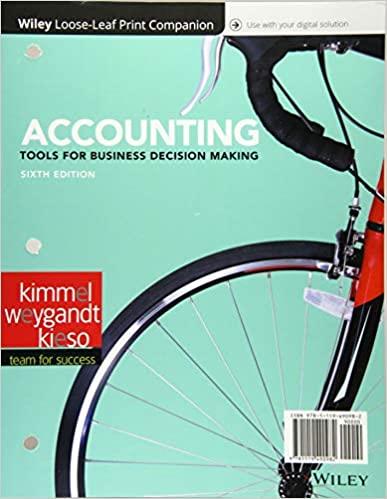

for the year ended December AAP-Equity method LO3 M Wh. Consolidation worksheet for loss on constructive retirement of subsidiary's debt with no Assume that a Parent company acquires an 80 percent interest in its Subsidiary on January 1, 2015. fair value of the 20 percent noncontrolling interest was $100,000. On January 1, 2015, the book value On the date of acquisition, the fair value of the 80 percent controlling interest was $400,000 and the of net assets equaled $500,000 and the fair value of the identifiable net assets equaled the book value of identifiable net assets i.e., there was no AAP or Goodwill). On December 31, 2016, the Subsidiary company issued $600,000 (face) 8%, five-year bonds to an unaffiliated company for $576,000. The bonds pay interest annually on December 31, and the bond discount is amortized using the straight-line method. The following schedule provides the bond amortization schedule from the initial issuance date. IHULIHI Date Cash Payment Amortization of Discount Interest Expense Carrying Amount $4,800 Dec. 31, 2016 Dec. 31, 2017 Dec. 31, 2018 Dec 31, 2019 Dec. 31, 2020 Dec. 31, 2021 $48,000 48,000 48,000 48,000 48,000 4,800 4,800 4,800 4,800 $52,800 52,800 52,800 52,800 52,800 $576,000 580,800 585,600 590,400 595,200 600,000 On December 31, 2018, the Parent paid $618,000 to purchase all of the outstanding Subsid- iary company bonds. The bond premium is amortized using the straight-line method. The following schedule provides the bond amortization schedule for the Parent's bond investment. Cash Payment Amortization of Premium Interest Income Carrying Amount Date Dec 31, 2018 Dec. 31, 2019. Dec. 31, 2020 Dec. 31, 2021 $48.000 48,000 48,000 $6,000 6,000 6,000 $42,000 42,000 42,000 $618,000 612,000 606,000 600,000 The Parent uses the equity method of pre-consolidation investment bookkeeping. The Parent and the Subsidiary report the following financial statements for the year ended December 31, 2019: Ubishers 456 Chapter 6 Consolidation of Variable interest Entities and Other Intercompany Parent Subsidiary Parent Subsidiary $600,000 (340,000) 260,000 (140,000) S 250.000 450.000 500,000 900,000 Income statement: Sales....... Cost of goods sold Gross profit. Operating & other expenses. Bond interest income.. Bond interest expense Income from subsidiary Net income $4,000,000 (2,400,000) 1,600,000 (1,200,000) 42,000 Balance sheet: Cash.... Accounts receivable Inventories..... Property, plant and equipment, net. Equity investment... Investment in bond (net). Total assets... $ 500,000 700,000 900,000 2,000,000 538,080 612,000 $5,250,080 $2,100,000 (52,800) 64,560 $ 506,560 $ 67,200 $ 800,000 750,000 Retained earnings statement: Beginning retained earnings...... Net income Dividends... Ending retained earnings $ 210,000 300,000 590,400 300.000 60,000 200,000 439.600 $ 943,520 506,560 (300,000) $1,150,080 Accounts payable.... Other current liabilities Bond payable (net).... Other long-term liabilities Common stock APIC Retained earnings .. Total liabilities and equity $402,400 67,200 (30,000) $439,600 950,000 600,000 1,000,000 1,150,080 $5,250,080 $2,100,000 Provide the consolidation entries and prepare a consolidation worksheet for the year ended December 31, 2019 for the year ended December AAP-Equity method LO3 M Wh. Consolidation worksheet for loss on constructive retirement of subsidiary's debt with no Assume that a Parent company acquires an 80 percent interest in its Subsidiary on January 1, 2015. fair value of the 20 percent noncontrolling interest was $100,000. On January 1, 2015, the book value On the date of acquisition, the fair value of the 80 percent controlling interest was $400,000 and the of net assets equaled $500,000 and the fair value of the identifiable net assets equaled the book value of identifiable net assets i.e., there was no AAP or Goodwill). On December 31, 2016, the Subsidiary company issued $600,000 (face) 8%, five-year bonds to an unaffiliated company for $576,000. The bonds pay interest annually on December 31, and the bond discount is amortized using the straight-line method. The following schedule provides the bond amortization schedule from the initial issuance date. IHULIHI Date Cash Payment Amortization of Discount Interest Expense Carrying Amount $4,800 Dec. 31, 2016 Dec. 31, 2017 Dec. 31, 2018 Dec 31, 2019 Dec. 31, 2020 Dec. 31, 2021 $48,000 48,000 48,000 48,000 48,000 4,800 4,800 4,800 4,800 $52,800 52,800 52,800 52,800 52,800 $576,000 580,800 585,600 590,400 595,200 600,000 On December 31, 2018, the Parent paid $618,000 to purchase all of the outstanding Subsid- iary company bonds. The bond premium is amortized using the straight-line method. The following schedule provides the bond amortization schedule for the Parent's bond investment. Cash Payment Amortization of Premium Interest Income Carrying Amount Date Dec 31, 2018 Dec. 31, 2019. Dec. 31, 2020 Dec. 31, 2021 $48.000 48,000 48,000 $6,000 6,000 6,000 $42,000 42,000 42,000 $618,000 612,000 606,000 600,000 The Parent uses the equity method of pre-consolidation investment bookkeeping. The Parent and the Subsidiary report the following financial statements for the year ended December 31, 2019: Ubishers 456 Chapter 6 Consolidation of Variable interest Entities and Other Intercompany Parent Subsidiary Parent Subsidiary $600,000 (340,000) 260,000 (140,000) S 250.000 450.000 500,000 900,000 Income statement: Sales....... Cost of goods sold Gross profit. Operating & other expenses. Bond interest income.. Bond interest expense Income from subsidiary Net income $4,000,000 (2,400,000) 1,600,000 (1,200,000) 42,000 Balance sheet: Cash.... Accounts receivable Inventories..... Property, plant and equipment, net. Equity investment... Investment in bond (net). Total assets... $ 500,000 700,000 900,000 2,000,000 538,080 612,000 $5,250,080 $2,100,000 (52,800) 64,560 $ 506,560 $ 67,200 $ 800,000 750,000 Retained earnings statement: Beginning retained earnings...... Net income Dividends... Ending retained earnings $ 210,000 300,000 590,400 300.000 60,000 200,000 439.600 $ 943,520 506,560 (300,000) $1,150,080 Accounts payable.... Other current liabilities Bond payable (net).... Other long-term liabilities Common stock APIC Retained earnings .. Total liabilities and equity $402,400 67,200 (30,000) $439,600 950,000 600,000 1,000,000 1,150,080 $5,250,080 $2,100,000 Provide the consolidation entries and prepare a consolidation worksheet for the year ended December 31, 2019








